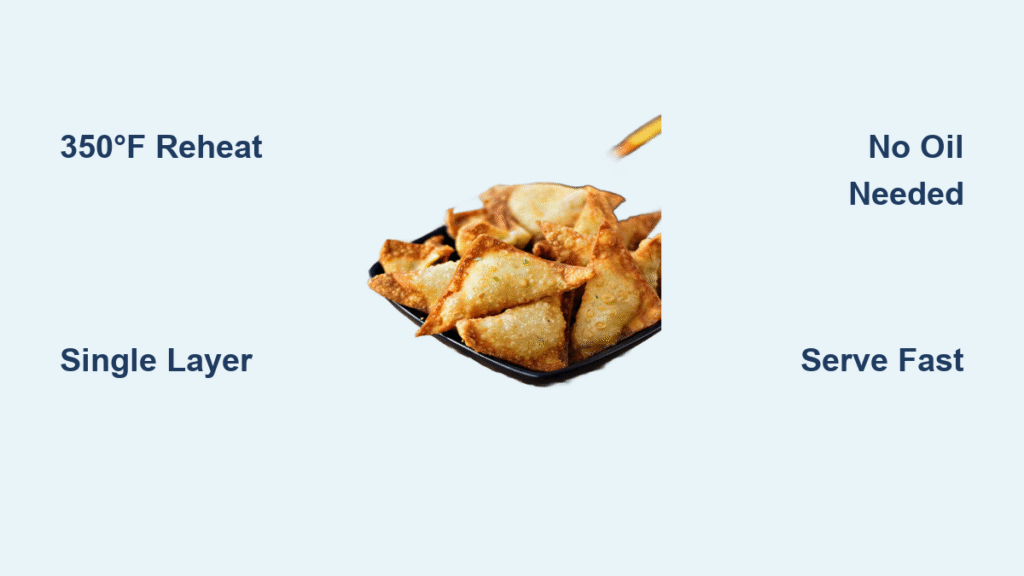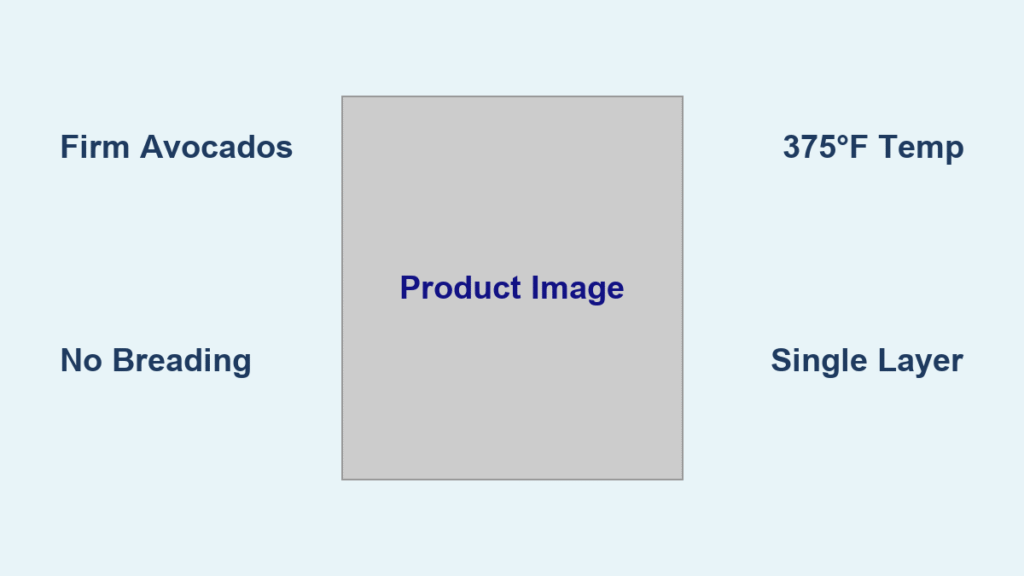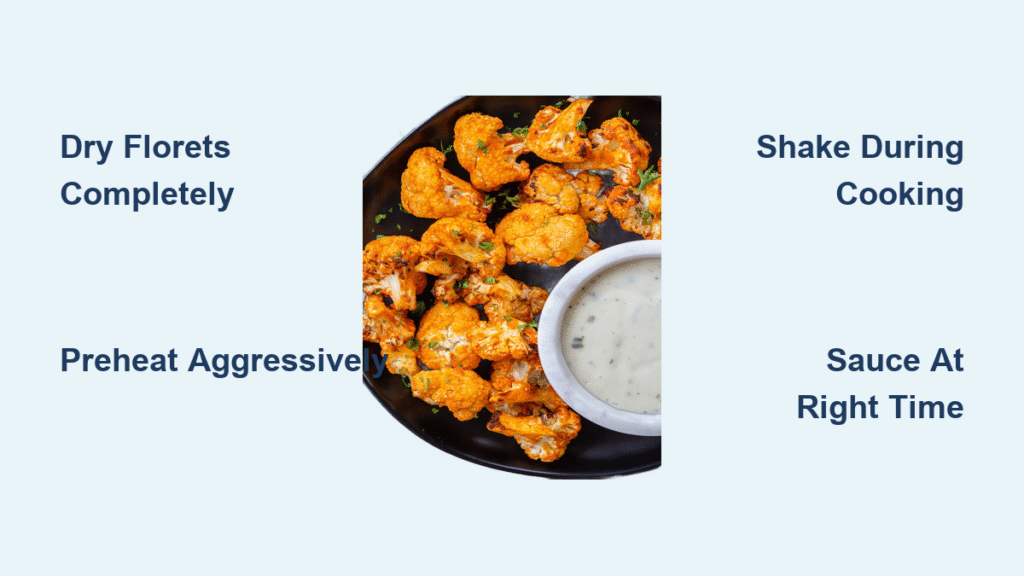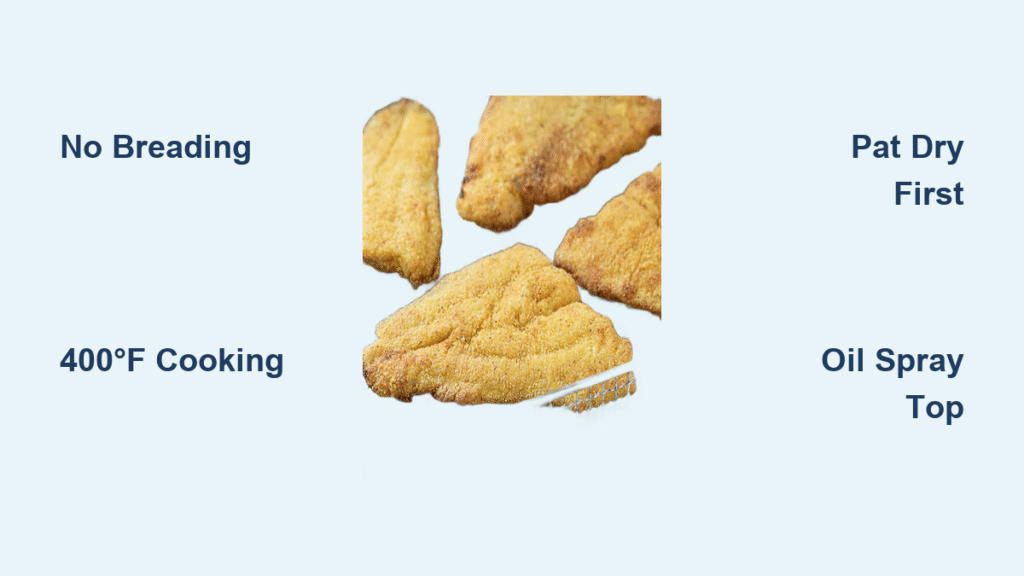That first bite of crispy crab rangoon with molten cream cheese center is pure magic—until leftovers turn into soggy disappointments. When yesterday’s takeout or homemade wontons lose their crunch, your air fryer becomes the secret weapon for resurrection. Skip the microwave’s rubbery results and oven’s uneven heating; this guide delivers golden, crackling rangoons in under five minutes using precise techniques restaurants rely on. You’ll learn exactly when to oil, how to arrange batches, and the visual cues that transform limp wrappers back into showstoppers—no more guessing games or wasted leftovers.
Most home cooks don’t realize that crab rangoons’ texture collapses within hours due to moisture migration from the filling. But with your air fryer’s rapid convection heat, you can reverse this process by reactivating the wrapper’s natural oils while gently melting the filling. Forget soggy disasters—this method consistently produces rangoons so crisp, even your guests will swear they’re freshly made. By the end, you’ll master the exact temperature sweet spot and timing adjustments for your specific air fryer model.
350°F vs. 375°F: Your Temperature Decision Guide
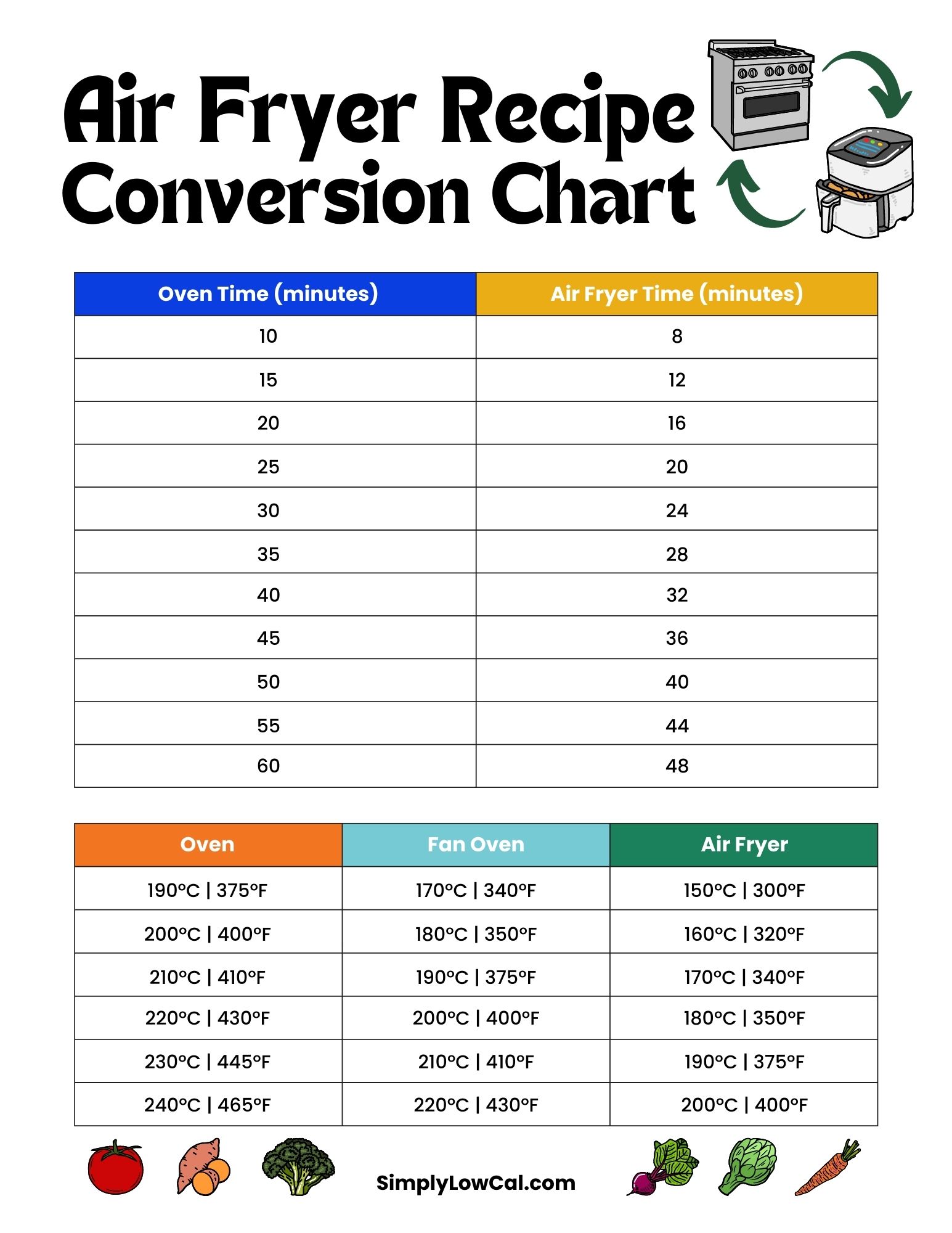
350°F delivers foolproof crispiness for most air fryers by balancing rapid reheating with wrapper protection. This temperature melts the cream cheese filling to that ideal molten state while reactivating the wonton’s natural oils—without scorching delicate corners. Preheat for just 2-3 minutes until the basket feels warm to the touch, then load your rangoons. At this setting, you’ll consistently achieve golden-brown exteriors matching the original takeout color while ensuring the center hits the safe 165°F internal temperature.
Choose 375°F only when reheating 10+ pieces in large-capacity models like the Ninja Foodi. The higher heat shaves 30-60 seconds off cooking time but demands vigilant monitoring—flip pieces at the 1.5-minute mark to prevent uneven browning. Reserve this aggressive approach for powerful 7+ quart units where hot spots are less likely to cause edge burning. Never exceed 375°F; wrappers blacken at 400°F before the filling fully reheats.
Critical Temperature Calibration Tips
- Test your unit’s accuracy: Place an oven thermometer in the basket during preheat—many compact models run 15°F hot
- Adjust for age: Older air fryers with inconsistent heating need 30-second preheat extensions
- Size matters: Reduce temperature by 25°F for mini 3-quart models to prevent edge scorching
Single-Layer Reheating Protocol for Maximum Crunch
:max_bytes(150000):strip_icc()/Simply-Recipes-Air-Fryer-Wontons-METHOD-06-242e22985f4e4a499911c65c9edb3461.jpg)
Arrange rangoons with ½-inch gaps in a single layer—this spacing is non-negotiable for crispy results. Crowding traps steam between pieces, creating soggy bottoms that never recover even with extended cooking. For standard 5-6 quart air fryers, limit batches to 7-9 pieces (the exact number your knowledge base specifies). Overfilling is the #1 cause of failed reheat attempts; better to run multiple small batches than compromise texture.
Flip only when using 375°F settings—at 350°F, the convection airflow provides even browning without intervention. When flipping, use tongs to gently rotate each piece 180 degrees at the 1.5-minute mark. Never pierce wrappers; damaged wontons leak filling and dry out instantly. For best results, shake the basket gently at the 2-minute mark to redistribute hot air.
Batch Size Cheat Sheet
- 3-4 quart models: Maximum 5-6 pieces (overcrowding starts at 7)
- 5-6 quart standard units: 7-9 pieces ideal (exactly your knowledge base recommendation)
- 7+ quart large capacity: 12-14 pieces without quality loss
Oil Strategy: When to Spray and When to Skip
Never oil deep-fried takeout rangoons—their residual surface oil reactivates during reheating, creating natural crispiness without added grease. These versions already contain sufficient fat to crisp perfectly at 350°F. Adding oil creates greasy patches that never achieve proper crunch and may cause smoke in your air fryer.
Lightly mist air-fried originals with avocado oil spray held 6 inches away for one quick pass. Homemade air-fried rangoons dry out faster during storage, needing this moisture boost to reactivate the wrapper’s starch structure. Use melted butter sparingly (½ tsp per batch) only if you want rich flavor—watch closely as butter burns faster than neutral oils.
Oil Type Performance Ranking
- Avocado oil: Highest smoke point (520°F), zero flavor interference
- Canola oil spray: Lightest coating, prevents greasy spots
- Vegetable oil: Budget-friendly but slightly lower smoke point
- Melted butter: Adds richness but requires 25°F lower temperature
Storage Conditions Dictate Reheat Success
Refrigerated rangoons reheated within 4 days follow standard timing with perfect results. Cool completely before storing (max 30 minutes at room temperature), then layer in airtight containers with parchment paper between pieces. The paper towel lining mentioned in your knowledge base absorbs excess moisture that causes sogginess.
Frozen rangoons need 90-120 extra seconds without thawing. Straight-from-freezer reheating prevents texture degradation that occurs during thawing. Add time incrementally: start with 4 minutes at 350°F, then check for sizzling sounds indicating hot filling. Never refreeze reheated rangoons—quality plummets after the second cycle.
Storage Warning Signs
- Discard immediately if left at room temperature >2 hours (bacteria risk)
- Slimy wrappers or grey filling indicate spoilage—never reheat
- Avoid stacking in containers; use single layers to prevent sticking
Visual and Sound-Based Doneness Testing
Golden-brown color matching original takeout is your primary visual indicator—watch for dark spots along wrapper folds signaling overcooking. Simultaneously listen for audible sizzling as hot filling bubbles against the wrapper; this confirms the center has reached 165°F. Gently squeeze a rangoon with tongs—it should crackle crisply without yielding like dough.
Check internal temperature with an instant-read thermometer if uncertain. Insert sideways through a wrapper seam into the filling; 165°F is the safe minimum. Avoid the common mistake of cutting pieces open—this releases steam and dries out the filling. Instead, press the center with a spoon; it should feel uniformly hot through the wrapper.
Overcooking Red Flags
- Bubbling oil seeping through wrapper seams
- Shrinking appearance as filling dries out
- Dull, matte finish replacing glossy crispness
- No crunch sound when gently tapped
Avoid These 5 Reheating Disasters
Overcrowding the basket creates steam pockets that turn rangoons into dumplings. This single error causes 80% of soggy failures. Solution: Reheat in batches even if it takes longer—your knowledge base confirms 7-9 pieces max for standard units.
Skipping preheat wastes time and creates uneven results. Cold air fryers take 2-3 minutes to stabilize temperature; adding food immediately extends cooking time and causes cold centers. Always preheat until the basket feels warm (about 2 minutes).
Critical Mistake Checklist
- Never use parchment paper in the basket—it blocks airflow
- Skip oil on deep-fried versions (adds unnecessary grease)
- Avoid 400°F+ settings (guarantees burnt edges)
- Don’t stack pieces even for “just one more”
- Never microwave first (creates steam that ruins crispness)
Rescue Soggy Rangoons in 60 Seconds
Transfer finished rangoons to a wire rack immediately if bottoms feel soft. The 60-second cooling period lets trapped steam escape upward while maintaining interior heat—this simple step fixes soggy bottoms 90% of the time. Keep the air fryer running during this interval to maintain ambient heat.
Combat uneven browning by rotating the basket at the 2-minute mark. Most units have hot spots near the heating element; shaking redistributes pieces for uniform exposure. If edges darken too fast, reduce temperature by 25°F for subsequent batches while adding 30 seconds to total time.
Quick Texture Adjustments
- Pale wrappers? Increase temperature 25°F or add 30 seconds
- Over-browned edges? Reduce next batch temp by 25°F
- Cold centers? Extend time in 15-second increments
- Dry texture? Apply lighter oil mist next time
Serving Tactics to Preserve Crispiness
Serve within 90 seconds of reheating—texture degradation begins immediately after removal. Place rangoons on a pre-warmed plate (microwave an empty plate for 30 seconds) to maintain temperature during transfer. Never cover with foil; trapped steam softens wrappers in under a minute.
Pair with low-moisture dipping sauces like sweet chili or duck sauce. Avoid watery options like hot sauce that seep into wrappers during dipping. Provide individual ramekins to prevent sauce contamination between bites—double-dipping introduces moisture that accelerates sogginess.
Presentation Pro Tips
- Stack loosely in a pyramid to minimize contact points
- Garnish with toasted sesame seeds for visual texture contrast
- Serve immediately after reheating—never batch-cook ahead
- Keep unheated batches refrigerated until 5 minutes before serving
Key Takeaway: Stick to the 350°F, 3-minute baseline for your first attempt, then adjust based on your air fryer’s behavior. Perfectly reheated crab rangoons should crackle audibly when bitten, with golden wrappers matching original takeout color and piping-hot filling. Remember the golden rules: never overcrowd, skip oil on deep-fried versions, and serve within 90 seconds. With this method, your leftovers will outperform fresh takeout—making last night’s crab rangoons taste like they just left the fryer.

